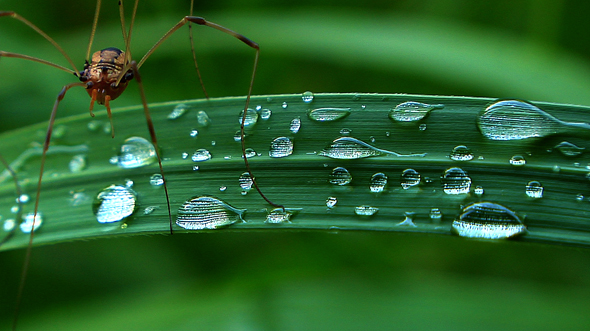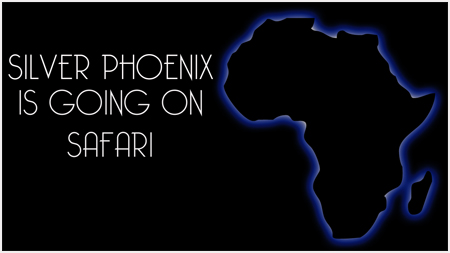
The latest underwater over land film challenge has begun.
This time around, the theme is “Animal Kingdom.” Why couldn’t I have had this theme when I was in Africa? 🙂
This is a tough time for wildlife filming in Iowa. Archery deer season is currently going on. They even allow hunting inside city limits as well as many parks. So, I’m guessing I’m going to have to find a blaze orange vest to wear as every year several people get shot by being mistaken for a deer.
Most of the birds that migrate have passed trough. The rivers haven’t frozen to concentrate the eagles near open water.
Right now I’m thinking about concentrating on the “Kingdom” portion of the theme and not so much the “Animal” part.
If you have any suggestions for ideas on this theme, send them my way!









The Little Things in Life
They say you get wiser the older you get. I think the same is true when it comes to cinematography as well.
I remember my first serious video camera like it was only yesterday. I couldn’t wait to unpack it, charge the batteries, stick in a tape and start capturing the natural world around me.
I don’t quite remember what was the first thing I ever pointed it at and hit the record button, but I do know I was all over the Iowa countryside filming anything and everything.
I also remember I couldn’t wait to take it to Yellowstone. I had been going there for years shooting still photographs and couldn’t wait to capture Yellowstone in motion. I wasn’t disappointed. I captured moose, elk, grizzly bears, glorious waterfalls, fantastic geysers. I was a happy camper.
And so, that’s the way it was year after year. Arches National Park to film Delicate Arch. Grand Teton’s to capture Mount Moran reflected in a still alpine lake. The Grand Canyon, Kings Canyon, Yosemite all stood in front of my camera lens.
One day, a few years ago, I decided to participate in a program at the Indian Creek Nature Center. It was a prairie walk. The Nature Center had been working for years to re-establish a tallgrass prairie and the effort was really paying off. Only about one percent of the native tallgrass prairie remains in Iowa having been plowed under in just a single generation. I had been to this prairie many times before and thought this trip would really be no different.
As I walked through the prairie with Education Facilitator Jan Aiels, I was looking for the big prairie prizes as I always did. The Cardinal Flower, Purple Coneflower and the other “stars” of the prairie had always been the object of my interest.
I didn’t know that in just a few moments, my view of the natural world would be cut down to size and forever changed.
We walked on the trails cut within the prairie until we came to a clearing where the center had laid logs around the perimeter for people to sit, talk and contemplate. I sat and listened as Jan talked about the vast prairies that once covered Iowa and just enjoyed being there taking in the cool early evening air as I listened.
Jan talked about the diversity of the prairie and the amazing amount of life it supported. She handed each of us a small plastic “bug box” and suggested we all fan out and try to capture something that interested us.
The moment of change was upon me.
For the first time I really had to slow down and actually “see” the prairie. I was amazed at all that I had passed by. It was easy to see that the prairie was teaming with life if you just took the time to look for it. After a few minutes we all gathered together to look at what we had each discovered. Everyone had “found” something and pretty much everyone had something that was different from what anyone else had.
I had found something that I had never seen before but learned was quite common on the prairie, a froghopper.
It was at that moment that I realized that I had passed by so many opportunities to film amazing creatures and plants. I never realized that there was an entire world right beneath me.
I began looking at things differently. I slowed down, I took the time to really get to know the areas I visited. There were so many things I would have missed had I not taken the time.
How many Monarch chrysalis had I walked past and never noticed?
Now I realize that it’s the little things in life that are important. No longer do I look ahead to see what’s bigger and better. I know that some of nature’s best are right at my feet.